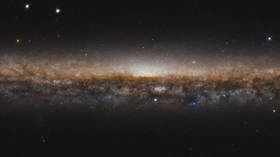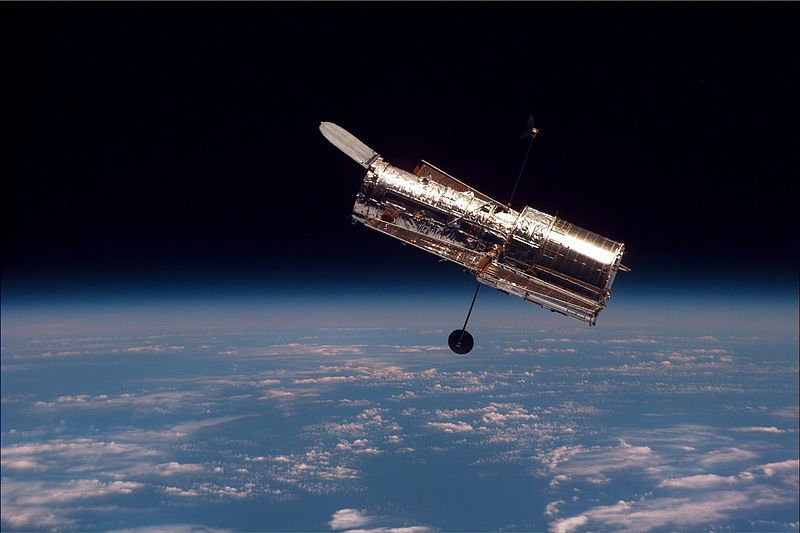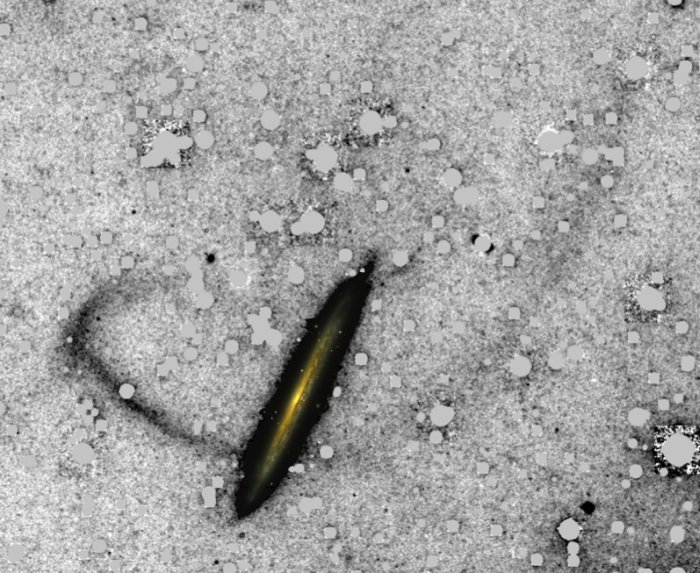Hubble beams back breathtaking PHOTO of ‘Knife Edge Galaxy’ as we’ve never seen it before

NASA has shared an incredible view of the ‘Knife Edge Galaxy’ in all its glory. With a spiral shape similar to our own Milky Way, the galaxy boasts a mysterious arm of stars which has caused huge debate among astronomers.
The newly released Hubble Space Telescope snap was painstakingly processed by amateur astronomer-cum-citizen scientist Judy Schmidt and showcases a remarkable perspective on the 150,000 light-year-wide object – officially designated NGC 5907 – which is some 56 million light years away in the northern constellation of Draco.

Originally discovered in 1788 by German-born British astronomer William Herschel, this particular galaxy has captivated astronomers ever since it was first spotted because of its unusual features, which are sadly somewhat obscured from the side-on angle.
The Knife Edge Galaxy boasts a ghostly arm that waves out from the bright glow in its center, mostly obscured by the vast amount of galactic dust around the solar clusters within.

This arm is a single giant stream of stars, over 700,000 light-years long, that loops out from the galaxy in spectacular fashion. Astronomers had long suspected that the arm was either the remnants of a dwarf galaxy torn apart by NGC 5907 before a merger some four billion years ago, or the leftovers from a merger with another galaxy of equal size.
However, a recent theory suggests that it may have been a close encounter with a "tidally disrupting satellite" which ripped the long stream of stars out from the galaxy's core – though this particular suggestion is still up for debate, subject to more in-depth analysis in the near future.
Also on rt.com Surf’s up? Planets with oceans likely far more common than we thought, says NASAThink your friends would be interested? Share this story!














